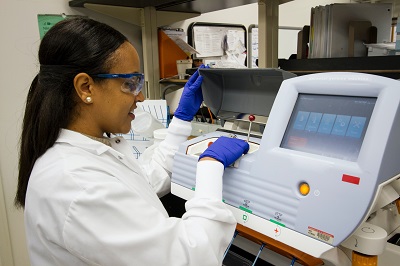To register a Class I medical device with Brazil's National Health Surveillance Agency (ANVISA), you need to follow a series of steps, submit specific documentation, and address key considerations to ensure compliance with Brazilian regulations. Below is a detailed breakdown of the steps, required documents, and important considerations.
Steps for Class I Medical Device Registration with ANVISA
Determine the Classification of Your Device
- Verify that the device qualifies as Class I under ANVISA’s classification system. Class I devices are low-risk and typically include items like basic surgical instruments, bandages, or low-complexity medical products.
Appoint a Brazilian Registration Holder (BRH)
- Foreign manufacturers are required to appoint a Brazilian Registration Holder (BRH). The BRH is a local entity or representative that will submit the application on your behalf and act as the official point of contact with ANVISA.
- The BRH must be registered with ANVISA and have the necessary legal authority to submit and manage medical device registrations.
Prepare the Technical Dossier
- The technical dossier for Class I devices must include essential information about the device’s safety, performance, and regulatory compliance. The dossier typically includes the following:
Required Documents
Application Form
- This form provides basic information about the manufacturer, device, and registration details. It must be completed by the BRH and submitted through ANVISA’s digital platform (e-Submission System).
Device Description
- A detailed description of the device, including its intended use, design, materials, and components. This should include any relevant safety data.
Instructions for Use (IFU)
- Clear instructions for the safe use of the device, including warnings, indications, contraindications, and precautions. These must be provided in Portuguese as per ANVISA’s requirements.
Labeling
- Labeling that complies with ANVISA’s regulatory requirements. The label must contain product information such as:
- Manufacturer details
- Lot number or serial number
- Product description
- Expiration date (if applicable)
- Instructions for use
- Any regulatory or compliance symbols
- Labeling that complies with ANVISA’s regulatory requirements. The label must contain product information such as:
Proof of Compliance with Quality Management System (QMS)
- Class I devices are typically subject to Quality Management System (QMS) standards. Proof of compliance with ISO 13485 certification is often required, but ANVISA may accept other equivalent documentation demonstrating that the manufacturer follows appropriate quality control measures.
Product Testing or Safety Documentation
- While less extensive than higher-risk devices, Class I devices should have any relevant safety or performance testing documented if applicable. This might include:
- Safety tests
- Electrical, mechanical, or biocompatibility testing
- Validation of sterilization (if applicable)
- If no testing is required, a declaration of conformity to relevant standards may suffice.
- While less extensive than higher-risk devices, Class I devices should have any relevant safety or performance testing documented if applicable. This might include:
Authorization Letter for BRH (if applicable)
- If the manufacturer is a foreign entity, they must submit an authorization letter, granting the BRH the right to act on their behalf for the registration process.
Declaration of Conformity
- A statement confirming that the device complies with Brazilian medical device regulations and applicable international standards.
Sterilization Documentation (if applicable)
- If the device is supplied sterile, you must provide documentation about the sterilization process, validation results, and sterility assurance.
Submission Process
Submit the Application via ANVISA’s e-Submission System (SNGPC):
- The BRH will submit the registration application and supporting documentation via ANVISA's SNGPC (Sistema de Notificação de Produtos de Saúde) system.
- All documents must be submitted in Portuguese, and the BRH handles the submission process.
Pay the Registration Fee:
- The application must be accompanied by the applicable registration fee. The amount varies based on the device and the applicant’s company size but is generally lower for Class I devices compared to higher-risk classes. Payment is typically processed through the SNGPC system.
ANVISA Review:
- ANVISA reviews the application and supporting documentation. Class I devices are generally subject to a more straightforward and faster review process. If ANVISA requires additional information or clarification, they will contact the BRH.
Approval and Registration:
- If the submission meets all requirements, ANVISA will approve the registration. The device will be listed in ANVISA's database, allowing the device to be legally marketed and distributed in Brazil.
- Registration for Class I devices is valid for 5 years, after which renewal is required.
Key Considerations
Translation: All documents, including the instructions for use, labeling, and the technical file, must be translated into Portuguese.
Brazilian Regulatory Compliance: Ensure that the device complies with Brazilian regulations, including the Brazilian Health Surveillance Code (ANVISA RDC) and any specific local standards that may apply to medical devices.
Post-Market Surveillance: Once the device is approved, the manufacturer must comply with post-market surveillance requirements, such as reporting adverse events or device malfunctions.
Local Representation: The BRH plays a key role in managing the entire process and ensuring compliance with Brazilian regulations.
Document Updates: Ensure that any required certifications or documentation are current and valid at the time of submission.
By following these steps and ensuring that all documentation is accurate and complete, you can navigate the registration process for Class I medical devices with ANVISA successfully.

Contact Us:
Whatsapp or Wechat:+86 15816864648;email address:hito.lin@grzan.cn
.png)
.jpg)
.png)

.png)